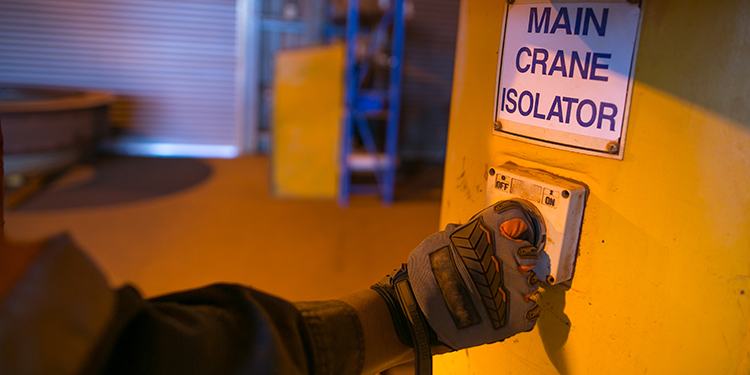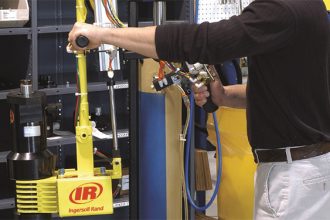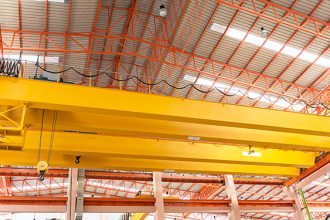Why Key Personnel Must Know How To Disconnect An Overhead Crane’s Runway Switch

With nearly all overhead cranes powered by electricity, it is imperative that personnel who operate, maintain, or work with these systems know how to cut the power in the case of emergency or maintenance need. That means they need to know where each crane’s runway disconnect switch—an electrical switch that isolates the building power source to the mainline conductor bar system, which feeds power to the crane—is located, how it works, and how to properly engage or disengage it as needed. Among those who should be trained on this critical system are crane operators, rigging personnel, signal persons, and maintenance staff.
There are a variety of reasons why these workers may need to know where crane runway disconnect switches are located and how to use them. They include:
- An emergency situation in which the e-stop button does not function, and the power needs to be cut by another means.
- Maintenance work on the crane (or multiple cranes on the same system) may need to be performed, requiring the power to be disconnected first.
- Work on the building may require the mainline to be disconnected prior to proceeding.
Requirements for the function of the runway disconnect switch are covered in the National Fire Protection Association’s NFPA 70 National Electrical Code NEC Article 610, Section 610.31, which states:
A disconnecting means that has a continuous ampere rating not less than that calculated in 610.14(E) and (F) shall be provided between the runway contact conductors and the power supply. The disconnecting means shall comply with Section 430.109. This disconnecting means shall be as follows:
-
- Readily accessible and operable from the ground or floor level.
- Lockable open in accordance with section 110.25.
- Open all ungrounded conductors simultaneously.
- Placed within view of the runway contact conductors.
There are several recommended best practices for runway disconnect switch use that further ensure operational safety. These include:
- Train all key personnel on the location of each runway disconnect switch and how to use it in the event of an emergency. If there is a crane equipment failure, the crane operator may not be able to turn off the crane, requiring other floor and maintenance personnel to do so instead.
- Verify that each runway disconnect switch is properly located and easy to access.
- Clearly mark all runway disconnect switch locations so they are visible to all personnel working in the area at all times.
- Train maintenance staffers in proper “Lockout/Tagout” procedures as detailed in the Occupational Health and Safety Administration’s (OSHA) Standard 1910.147.
Want more details about the safe operation of cranes? The Crane Manufacturers Association of America (CMAA), offers CMAA Specification 79: Crane Operator’s Manual, and CMAA Specification 80: Below-the-Hook Lifting Device Operator’s Manual.



